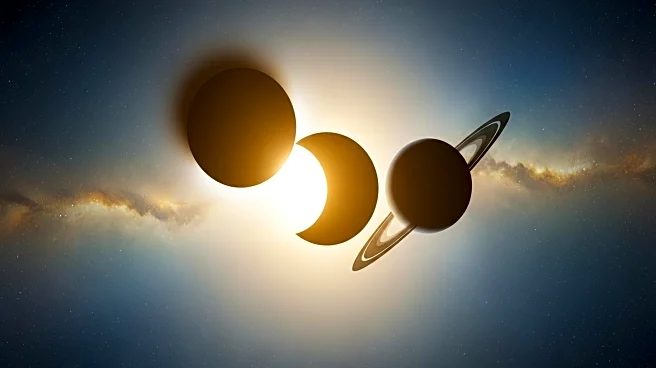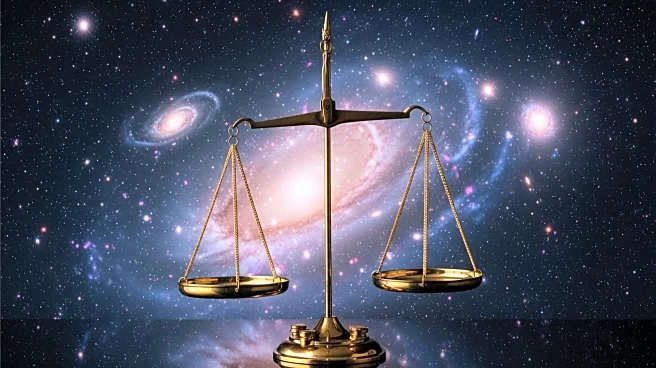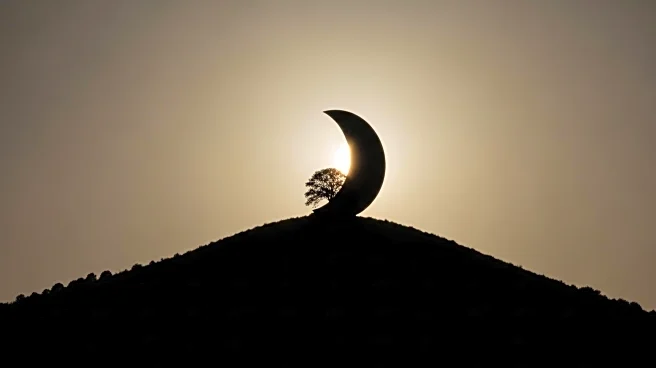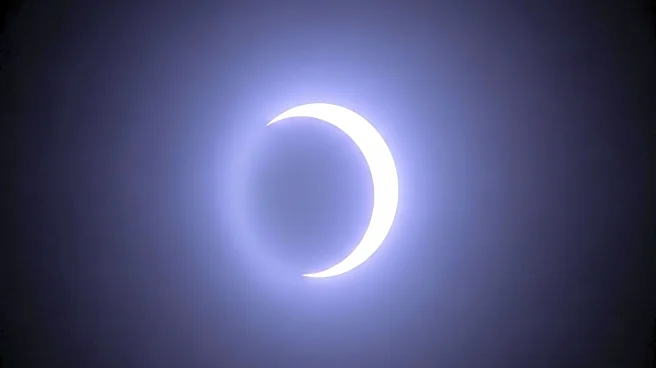What's Happening?
The autumnal equinox, occurring on Monday, marks the beginning of fall in the Northern Hemisphere and spring in the Southern Hemisphere. During this event, day and night are nearly equal in length as the sun is positioned directly above the equator. This astronomical phenomenon is one of the two times in the year when both the north and south poles receive sunlight simultaneously. Historically, equinoxes have been celebrated worldwide, often associated with harvest festivals in the Northern Hemisphere. For instance, the Polish Dozynki festival and gatherings at the Mayan site Chichen Itza in Mexico are linked to this event. This year, regions like Antarctica, New Zealand, and parts of Australia may witness a partial lunar eclipse coinciding with the equinox.
Why It's Important?
The equinox is significant as it marks a transition in seasons, affecting various cultural, agricultural, and environmental aspects. In the Northern Hemisphere, it signals the onset of shorter days leading up to the winter solstice, impacting agricultural cycles and energy consumption patterns. Culturally, it is a time for festivals and traditions that celebrate the harvest and the balance of day and night. The equinox also serves as a reminder of the Earth's axial tilt and its impact on climate and weather patterns, influencing meteorological studies and forecasts.
What's Next?
As the Northern Hemisphere moves towards winter, daylight will continue to decrease until the winter solstice in December. This shift will influence agricultural practices, energy usage, and cultural activities. Meteorologists and climatologists will monitor these changes to predict weather patterns and prepare for seasonal impacts. Additionally, cultural and religious communities may engage in traditional celebrations and rituals associated with the equinox and the changing seasons.
Beyond the Headlines
The equinox highlights the intricate relationship between Earth's movements and human activities. It underscores the importance of understanding astronomical events in the context of cultural heritage and environmental awareness. As climate change continues to affect global weather patterns, the study of such natural phenomena becomes increasingly relevant in predicting and adapting to future changes.












